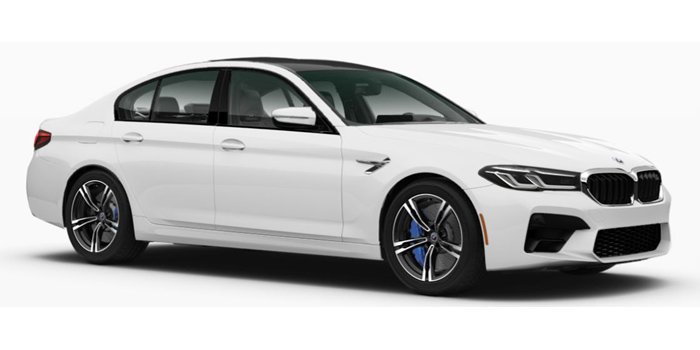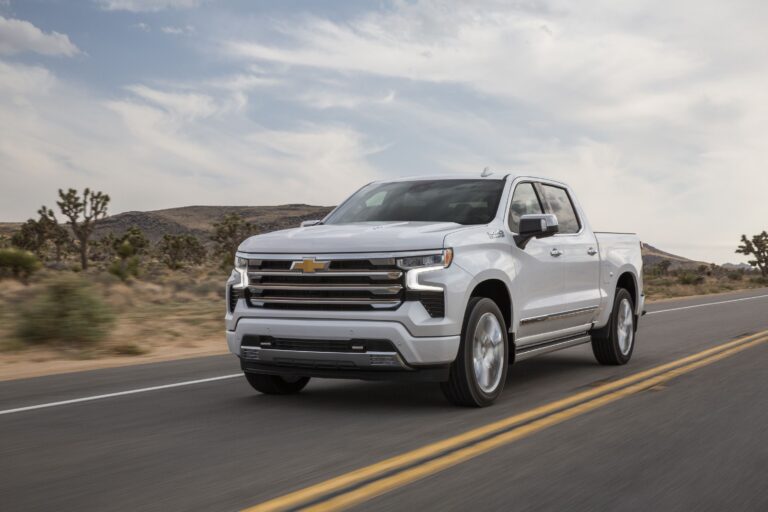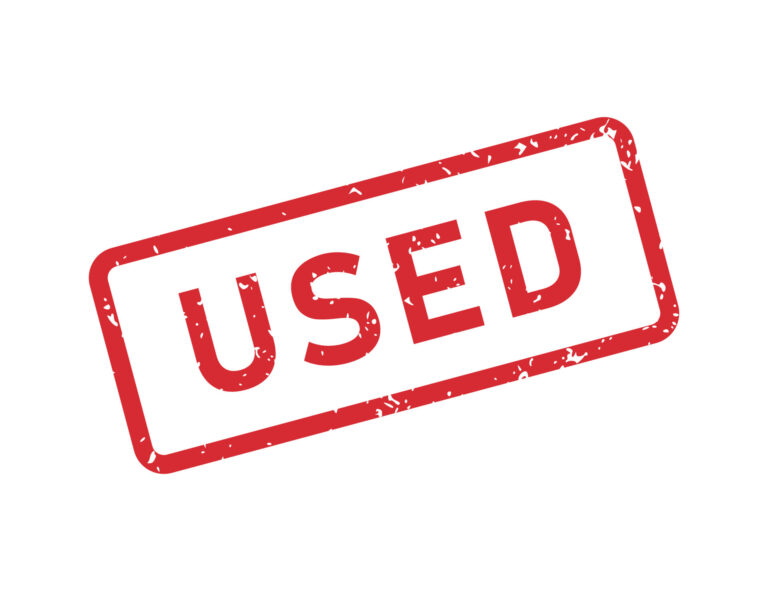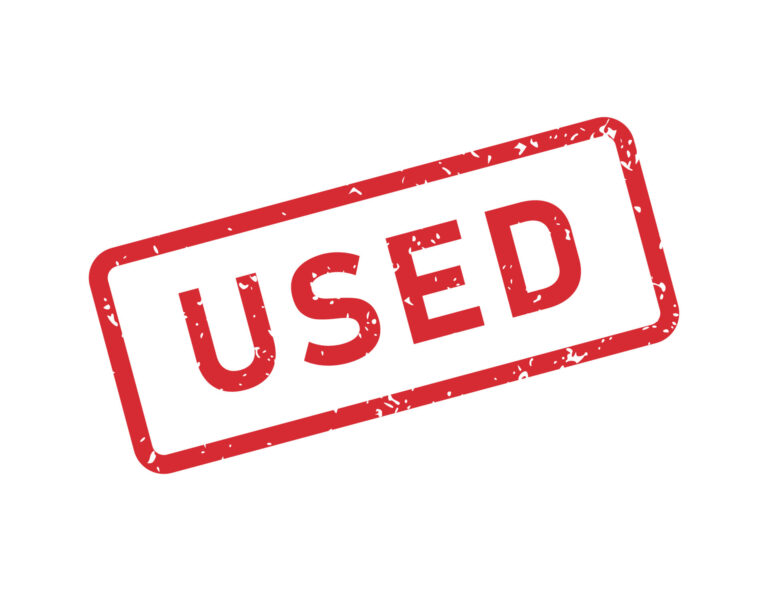Brand New Car Prices In Pakistan: A Comprehensive Guide to Understanding the Market
Brand New Car Prices In Pakistan: A Comprehensive Guide to Understanding the Market cars.truckstrend.com
Introduction: Navigating the Complexities of Car Ownership
Owning a brand new car in Pakistan is often seen as a significant milestone, a symbol of progress and convenience. However, the journey from aspiration to acquisition is fraught with complexities, primarily driven by the ever-fluctuating landscape of brand new car prices. Unlike more stable markets, car prices in Pakistan are a dynamic reflection of a confluence of economic indicators, government policies, global supply chain dynamics, and local market forces. Understanding these intricate layers is not just about knowing a number; it’s about comprehending the value, affordability, and long-term implications of such a significant investment.
Brand New Car Prices In Pakistan: A Comprehensive Guide to Understanding the Market
This comprehensive guide aims to demystify brand new car prices in Pakistan, offering insights into the factors that shape them, the categories of vehicles available, practical advice for prospective buyers, and a glimpse into the future of the automotive sector in the country. Whether you’re a first-time buyer or looking to upgrade, this article will equip you with the knowledge needed to make informed decisions in a challenging yet evolving market.
Understanding the Landscape of Car Prices in Pakistan
The pricing mechanism for brand new cars in Pakistan is influenced by a multi-faceted array of factors, making it one of the most volatile aspects of the consumer market. These factors often interact, creating a domino effect on the final price tag.
1. Exchange Rate Volatility (PKR vs. USD)
Perhaps the most dominant factor, the consistent depreciation of the Pakistani Rupee against the US Dollar directly impacts car prices. A significant portion of a car’s components, including Completely Knocked Down (CKD) kits, raw materials, and machinery, are imported. When the Rupee weakens, the cost of these imports in local currency rises proportionally, forcing manufacturers to increase ex-factory prices.
2. Government Taxes and Duties
The Pakistani government levies a substantial number of taxes and duties on imported components and finished vehicles. These include:
- Customs Duty: Varies based on engine size and vehicle type.
- Sales Tax (GST): A significant percentage applied at various stages.
- Federal Excise Duty (FED): Imposed on vehicles, with rates varying by engine capacity.
- Withholding Tax (WHT): Applied at the time of purchase, higher for non-filers.
- Regulatory Duty (RD): Can be imposed to curb imports or protect local industry.

These taxes collectively add a significant percentage to the base price, often making up 30-50% or even more of the final cost.

3. Inflation and Production Costs
General inflation in the economy translates into higher operational costs for manufacturers, including increased wages, energy prices, and the cost of domestically sourced raw materials. These rising production costs are inevitably passed on to the consumer.
4. Import Policy and Regulations

Government policies regarding import tariffs, duties on CBU (Completely Built Unit) vs. CKD (Completely Knocked Down) parts, and restrictions on certain vehicle types can significantly influence the market. Changes in these policies can lead to sudden price adjustments.
5. Demand and Supply Dynamics
Pakistan’s automotive market has historically been dominated by a few players, leading to an oligopolistic structure. Limited production capacity often struggles to meet high demand, leading to phenomena like "own money" (premium paid for immediate delivery) and long waiting periods. This imbalance allows manufacturers to maintain higher prices.
6. Global Supply Chain Issues
Events like the COVID-19 pandemic and geopolitical tensions have exposed vulnerabilities in global supply chains, leading to chip shortages, increased freight costs, and delays in component delivery. These external factors contribute to higher production costs and, consequently, higher car prices.
7. Competition (or Lack Thereof)
While new entrants have emerged in recent years, the market is still not fiercely competitive. Existing players often align their pricing strategies, limiting the downward pressure that true competition would otherwise exert.
Major Players and Their Offerings: Categories of Cars
The Pakistani automotive market offers a range of brand new vehicles, broadly categorized by their segment and price point.
1. Hatchbacks (Entry-Level & Compact)
These are typically the most affordable new cars, ideal for city driving and smaller families.
- Examples: Suzuki Alto, Suzuki Cultus, Suzuki WagonR, Kia Picanto.
- Characteristics: Fuel-efficient, compact size, basic features. Prices typically range from PKR 2.5 million to PKR 4.5 million.
2. Sedans (Mid-Range & Executive)
The sedan segment remains highly popular, offering a balance of comfort, performance, and features.
- Examples: Toyota Yaris, Honda City, Changan Alsvin, Proton Saga, Toyota Corolla, Honda Civic.
- Characteristics: More spacious than hatchbacks, better highway stability, varied engine options, and more comfort features. Prices range from PKR 4.0 million to PKR 8.5 million, with premium variants going higher.
3. SUVs/Crossovers (Growing Segment)
This segment has witnessed exponential growth in recent years, reflecting a global trend and changing consumer preferences for higher ground clearance, bolder styling, and more features.
- Examples: Kia Sportage, Hyundai Tucson, MG HS, Proton X70, Haval Jolion, Haval H6, Chery Tiggo 4 Pro, Chery Tiggo 8 Pro, DFSK Glory 580.
- Characteristics: Versatile, robust, higher seating position, often packed with advanced features and safety tech. Prices range from PKR 6.5 million to PKR 11.5 million or more.
4. Light Commercial Vehicles (LCVs) & Vans
Primarily used for commercial purposes but some models double as family vehicles.
- Examples: Suzuki Bolan, Suzuki Ravi, DFSK Prince K01.
- Characteristics: Basic, utilitarian, focused on cargo or passenger carrying capacity. Prices typically range from PKR 1.5 million to PKR 3.0 million.
5. Luxury/Premium Vehicles
While not the focus of the mass market, a segment exists for imported luxury brands.
- Examples: Audi, BMW, Mercedes-Benz.
- Characteristics: High-end features, superior comfort, performance, and brand prestige. These are usually imported as CBUs and subject to very high duties, pushing prices well into tens of millions.
The Impact of Economic Instability on Car Prices
Pakistan’s economic volatility directly translates into immediate and frequent revisions in car prices.
- Currency Devaluation: As mentioned, a weaker Rupee means higher costs for imported CKD kits and components, forcing manufacturers to raise prices, sometimes multiple times within a single year.
- High Inflation: General inflation erodes purchasing power, making cars less affordable for the average consumer. It also increases the operational costs for manufacturers, which are passed on.
- Interest Rate Hikes: For those opting for car financing, rising interest rates significantly increase the total cost of ownership, making EMIs (Equated Monthly Installments) heavier. This can dampen demand, though often not enough to force price reductions due to other cost pressures.
- Government Fiscal Measures: To control imports or generate revenue, the government might impose new duties or increase existing ones, leading to immediate price hikes. Conversely, any relief or incentive could theoretically lower prices, but such instances are rare and often temporary.
Navigating the Purchase: Tips and Considerations
Buying a new car in Pakistan requires careful planning and awareness.
- Budgeting Realistically: Beyond the ex-factory price, factor in registration charges, provincial taxes, insurance, freight charges (if applicable), and any potential "own money." These can add hundreds of thousands to the final cost.
- Financing Options: Explore various bank financing options. Compare interest rates (conventional vs. Islamic), processing fees, and repayment tenures. Understand the total cost over the loan period.
- Booking and Delivery Times: Be prepared for potentially long waiting periods (sometimes 4-6 months or more) for popular models. If immediate delivery is crucial, be wary of paying "own money" as it adds an unofficial premium to the price. Always try to book directly from an authorized dealership.
- Understanding Variants and Features: Don’t just look at the base model price. Higher variants come with more features (e.g., airbags, infotainment systems, alloy wheels) that significantly enhance comfort, safety, and resale value. Compare feature lists carefully.
- Resale Value: In Pakistan, resale value is a major consideration. Brands like Toyota and Suzuki generally command strong resale values due to their reliability, low maintenance costs, and widespread spare parts availability. New entrants are still building this reputation.
- Dealership Experience: Choose reputable dealerships. Ensure transparency in pricing, delivery timelines, and after-sales service commitments. Get everything in writing.
- Stay Updated: Car prices are dynamic. Always verify the latest prices directly from the manufacturer’s official website or an authorized dealership before making a decision.
Challenges and Future Outlook
The brand new car market in Pakistan faces significant challenges for both consumers and manufacturers.
Challenges for Consumers:
- Affordability: Skyrocketing prices put new cars out of reach for a large segment of the population.
- Quality and Features: Compared to international markets, Pakistani cars often come with fewer safety and comfort features for the price.
- "Own Money": The unofficial premium demanded by investors for immediate delivery is a major nuisance and adds to the actual cost.
- Limited Choices: Despite new entrants, the variety of models and competitive pricing is still limited compared to other developing economies.
Challenges for Manufacturers:
- Economic Volatility: Unpredictable exchange rates and high inflation make long-term planning and investment difficult.
- Import Reliance: Heavy reliance on imported CKD kits and components exposes manufacturers to global supply chain disruptions and currency fluctuations.
- Policy Inconsistency: Frequent changes in government policies and taxes create an uncertain business environment.
- Low Localization: Despite decades of operation, the level of localization (local parts manufacturing) remains relatively low for many complex components, hindering cost reduction.
Future Outlook:
The future of brand new car prices in Pakistan is closely tied to the country’s economic stability. Increased localization efforts, government incentives for local manufacturing, and the emergence of more competitive players could potentially stabilize or even reduce prices in the long run. The nascent but growing interest in Electric Vehicles (EVs) could also introduce a new dynamic, especially if local assembly and charging infrastructure develop, offering a potential hedge against fuel price volatility. However, until fundamental economic reforms take hold, price volatility is likely to remain a defining characteristic of the Pakistani auto market.
Brand New Car Prices In Pakistan: A Representative Price Table (as of Mid-2024)
Disclaimer: The prices provided below are approximate ex-factory prices in Pakistani Rupees (PKR) and are subject to change without prior notice due to economic conditions, government policies, and manufacturer revisions. These prices do not include freight charges, withholding tax (WHT), registration charges, or any potential "own money" premiums. Always verify the latest prices with authorized dealerships.
| Make | Model | Variant | Engine (cc) | Transmission | Ex-Factory Price (PKR) | Key Features (Brief) |
|---|---|---|---|---|---|---|
| Suzuki | Alto | VXR | 660 | Manual | 2,750,000 | AC, Power Steering, Dual Airbags |
| Alto | VXL | 660 | AGS | 3,050,000 | AC, Power Steering, Dual Airbags, ABS, Power Windows | |
| Cultus | VXL | 1000 | Manual | 3,850,000 | AC, Power Windows, Dual Airbags, ABS | |
| WagonR | VXL | 1000 | Manual | 3,749,000 | AC, Power Windows, Dual Airbags, ABS | |
| Swift | GL | 1200 | Manual | 4,310,000 | Push Start, LED DRLs, Dual Airbags, ABS | |
| Swift | GLX CVT | 1200 | Automatic | 5,040,000 | Push Start, LED DRLs, 6 Airbags, Climate Control, Cruise Control | |
| Toyota | Yaris | 1.3 GLI MT | 1300 | Manual | 4,479,000 | Dual Airbags, ABS, EBD, Power Windows |
| Yaris | 1.3 Ativ X CVT | 1300 | Automatic | 5,429,000 | Dual Airbags, ABS, EBD, Climate Control, Push Start | |
| Corolla | Altis 1.6 M.T | 1600 | Manual | 6,349,000 | Dual Airbags, ABS, EBD, Immobilizer, Power Windows | |
| Corolla | Altis 1.6 CVT | 1600 | Automatic | 6,659,000 | Dual Airbags, ABS, EBD, Immobilizer, Power Windows | |
| Honda | City | 1.2 LS MT | 1200 | Manual | 4,689,000 | Dual Airbags, ABS, EBD, Power Windows |
| City | 1.5 Aspire CVT | 1500 | Automatic | 5,649,000 | Dual Airbags, ABS, EBD, Cruise Control, Push Start | |
| Civic | 1.5 Turbo Oriel | 1500 | CVT | 9,899,000 | 6 Airbags, Honda Sensing, Auto Climate, Push Start, Sunroof | |
| Kia | Picanto | 1.0 AT | 1000 | Automatic | 4,000,000 | Dual Airbags, ABS, EBD, Power Windows |
| Sportage | Alpha | 2000 | Automatic | 7,300,000 | Dual Airbags, ABS, EBD, Parking Sensors, Keyless Entry | |
| Sportage | FWD | 2000 | Automatic | 8,050,000 | 6 Airbags, Cruise Control, Climate Control, Rear Camera | |
| Hyundai | Elantra | 1.6 GL | 1600 | Automatic | 6,700,000 | Dual Airbags, ABS, EBD, Sunroof (in some variants) |
| Tucson | FWD GLS | 2000 | Automatic | 7,799,000 | Dual Airbags, ABS, EBD, Push Start, Panoramic Sunroof | |
| Changan | Alsvin | 1.5 Lumiere DCT | 1500 | Automatic | 4,549,000 | Dual Airbags, Sunroof, Rear Camera, Cruise Control |
| Proton | Saga | 1.3 Ace AT | 1300 | Automatic | 3,249,000 | Dual Airbags, ABS, EBD, Rear Camera |
| X70 | 1.5 Executive AWD | 1500 | Automatic | 8,999,000 | 6 Airbags, ADAS, Panoramic Sunroof, Power Tailgate | |
| MG | HS | 1.5T | 1500 | DCT | 9,099,000 | 6 Airbags, ADAS, Panoramic Sunroof, Power Seats |
| Chery | Tiggo 4 Pro | 1.5 Pro Comfort | 1500 | CVT | 6,699,000 | Dual Airbags, ABS, EBD, Rear Camera, Keyless Entry |
| Tiggo 8 Pro | 1.6 Pro Max | 1600 | DCT | 9,699,000 | 6 Airbags, ADAS, Panoramic Sunroof, 7-Seater, Power Tailgate |
Frequently Asked Questions (FAQ)
Q1: Why are brand new car prices in Pakistan so high compared to other countries?
A1: High prices are primarily due to several factors: the significant depreciation of the Pakistani Rupee against the US Dollar (leading to higher import costs for CKD kits and parts), high government taxes and duties (customs duty, sales tax, FED), low localization levels, and an oligopolistic market structure with limited competition.
Q2: How often do car prices change in Pakistan?
A2: Car prices can change frequently, often several times within a year. This is mainly driven by the volatility of the PKR-USD exchange rate and changes in government tax policies or global supply chain costs. Manufacturers often announce price revisions in response to these external factors.
Q3: What is "own money" and how can I avoid it?
A3: "Own money" is an unofficial premium paid to an investor or dealer for immediate delivery of a new car, bypassing the standard long waiting periods. It’s an illegal practice but prevalent due to high demand and limited supply. To avoid it, book your car directly from an authorized dealership and be prepared for the official waiting period. Avoid intermediaries promising quick delivery.
Q4: What taxes are included in the car price, and what additional costs should I expect?
A4: The ex-factory price usually includes Federal Excise Duty (FED) and Sales Tax (GST). However, you will incur additional costs such as Withholding Tax (WHT) (higher for non-filers), provincial registration fees, number plate charges, and sometimes freight charges if the car is transported from the plant to a distant dealership. Insurance is also an additional cost you should factor in.
Q5: Is it better to buy a new car or a used car in Pakistan?
A5: This depends on your budget and priorities. New cars offer peace of mind with warranty, no prior wear and tear, and the latest features. However, they come with higher prices, depreciation, and waiting times. Used cars are more affordable and available immediately, but require thorough inspection and carry risks of hidden faults. Given the rapid depreciation of the PKR, some argue that new cars hold their value better relative to the initial investment over time, but this varies greatly by model and market conditions.
Q6: How does the PKR-USD exchange rate affect car prices?
A6: The exchange rate is a critical factor. Since most car manufacturers in Pakistan import a significant portion of their components (CKD kits) from abroad, a weaker Pakistani Rupee means they have to pay more in PKR for the same dollar-denominated imports. This increased cost is then passed on to the consumer through higher car prices.
Q7: Are electric vehicles (EVs) becoming affordable in Pakistan?
A7: EVs are still in their nascent stage in Pakistan and generally remain more expensive than their conventional counterparts. While the government has offered some tax incentives for EVs, the high import duties on CBU EVs and the limited local assembly mean their prices are still premium. The lack of widespread charging infrastructure also remains a challenge, making them less accessible for the average consumer currently.
Concluding Summary: A Dynamic Market Requiring Diligence
The landscape of brand new car prices in Pakistan is a complex, ever-shifting terrain. It is profoundly influenced by macroeconomic factors like currency devaluation and inflation, alongside government taxation policies, global supply chain dynamics, and the unique demand-supply characteristics of the local market. For prospective car buyers, understanding these intricate relationships is paramount to making an informed and financially sound decision.
While the market presents challenges such as high prices, "own money" phenomena, and long waiting periods, new entrants and a gradual shift towards more diversified offerings provide a glimmer of evolving competition. Navigating this market successfully requires diligence, careful budgeting, staying updated on price changes, and verifying information from official sources. Ultimately, buying a brand new car in Pakistan is not just a transaction; it’s an investment that demands a thorough understanding of the economic forces at play.






